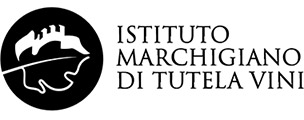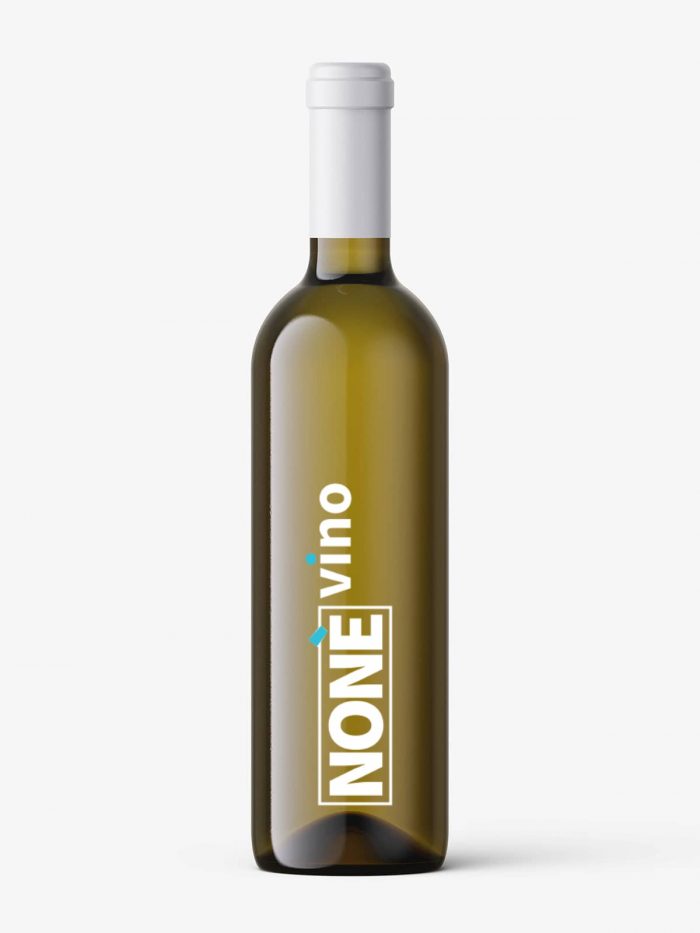Verdicchio dei Castelli di Jesi DOC Appellation
Protected Designation of Origin (PDO)


The historical link between the vine and the geographical environment in the territory of the Marca Anconetana begins with the arrival of the Benedictine monks and then with the Camaldolese monks who have reintroduced and spread the traditional vine for centuries. Witness, among other things, the centennial Cupramontana grape festival. The monks, therefore, in the Marche are responsible for handing down the viticultural-oenological techniques, the improvement of the product and, above all, its shelf life.
With the spreading of the sharecropping contract that creates widespread appoderation and the availability of workforce, wine ceases to be a drink only for the wealthy classes and becomes food for the rural classes.
As early as the early 1500s, the Spanish Herrera, professor in Salamanca, described the most common varieties of vines and the white winemaking technique. Among the names of the vines described is Verdicchio thus explained “white grape that has a stalk grain and shines more than any other. These vines are better in high and not humid places, than flat and in fatty, rested places, because it has a very thin and tender run, whereupon it rots very quickly, and it has a vine so tender that by itself most of it all falls and it is necessary that at the time of the harvest it is all gathered on the ground, and for this reason it seeks a dry and not windy place, very high in the hills.
The wine of this vine is better than any other white. It keeps for a long time, it is very clear, fragrant and sweet. But the grapes of it to eat are not worth much “. And again, a significant historical link resulting from the Unification of Italy in 1861 is the initiative relating to the establishment of the Provincial Ampelographic Commission, promoted by the Prefect and chaired by the oenologist De Blasis, who in 1871 published the ” of the Province of Ancona “.
The different climatic and geomorphological realities of theterritories are reviewed and the cultivated vines are described, listing their characters and synonyms. Verdicchio (or Verdeccio) is described for the district area of Jesi. This is also the period of parasites: powdery mildew (1851), downy mildew (1879), phylloxera (1890). The time spent to find the solutions pushed the winemakers to eliminate many clonal varieties present in the territory, favoring vines unknown in the regional winemaking history minus the Verdicchio which was the most commercialized wine. Further historical confirmation of this is what the scholar Arzelio Felini wrote in 1905-6 in Marchigiani Studies “It is over twenty years that our winemakers, in trying to solve the Marche wine problem,
It was in the 1960s that EEC aid made it possible to renew all the regional viticulture, passing from mixed cultivation (rows) to specialized cultivation (vineyard) with espalier systems to better carry out the cultivation treatments and produce quality grapes. In the classification carried out by Di Rovasenda (1881), Verdicchio is declared the most prized Italian grape variety among the white grape varieties of the Marche.
Verdicchio wine acquires commercial notoriety in the early 1950s when two producers invested in the construction in one of the “castles” of a transformation cellar to process their grapes and characterized the product with a typical bottle: the Greek amphora in reference to the Doric civilization that founded the city of Ancona. The commercial development was carried out by another pharmaceutical industrialist who acquired the winery which was followed by the enhancement with the designation of origin that allowed the current development of the DOC.
The sharecropping period provided for the division of the grapes between the owner and the sharecropper and, consequently, the separate vinification in their respective homes. Different techniques and different skills did not allow to obtain a quality product.This comes with the community support for investments in vineyards, winemaking plants and commercial structures which, thanks to the denomination, are able to achieve considerable development on the domestic and international markets.
A mention should also be made of nursery activities. In the area there were many small nurserymen with their own mother plant farms which made it possible to satisfy the demand in grafted cuttings so that the renewal of the viticulture of the 1960s did not suffer varietal imbalances and pollution. Then the nursery has taken on forms and values of a national dimension so that the demand has been satisfied in availability and varietal safety.
The Verdicchio dei Castelli di Jesi DOC wine obtained the recognition of the Controlled Designation of Origin on 11 August 1968.
Territory
The geographical area suited to the production of the Verdicchio dei Castelli di Jesi DOC wine is located near the Esino river, in some territories of the provinces of Ancona and Macerata, historically Castelli because they gravitated to the politics and economy of Jesi which in 1194 gave the birthplace of Frederick II of Swabia. The production area is adequately ventilated, bright and favorable to the fulfillment of all the vegetative-productive functions of the vineyards.
The Production Area of the Verdicchio dei Castelli di Jesi DOC wine is located in:
– province of Ancona and includes the territory of the municipalities of Arcevia, Barbara, Belvedere Ostrense, Castelbellino, Castelplanio, Corinaldo, Cupramontana, Maiolati Spontini, Mergo, Montecarotto, Monte Roberto, Morro d’Alba, Ostra, Poggio San Marcello, Rosora, San Marcello , San Paolo di Jesi, Senigallia, Serra de ‘Conti, Serra San Quirico and Staffolo.
– province of Macerata and includes the territory of the towns of Apiro, Cingoli and Poggio San Vicino.
The Production Area of the DOC Verdicchio Wine of the Castles of Jesi Classico and Classico Superiore includes the oldest original area, which is located in:
– province of Ancona and includes the territory of the municipalities of Arcevia, Barbara, Belvedere Ostrense, Castelbellino, Castelplanio, Corinaldo, Cupramontana, Maiolati Spontini, Mergo, Montecarotto, Monte Roberto, Morro d’Alba, Poggio San Marcello, Rosora, San Marcello, San Paolo di Jesi, Serra de ‘Conti, Serra San Quirico and Staffolo;
– province of Macerata and includes the territory of the towns of Apiro, Cingoli and Poggio San Vicino.
Vinification and Aging
During the vinification phases, only loyal and constant oenological practices of the area are allowed, suitable to give the wines their particular quality characteristics.
The oenological practices of vinification of the Verdicchio dei Castelli di Jesi DOC wine include, among other things, that:
– The maximum yield of grapes into DOC Verdicchio dei Castelli di Jesi wine must not exceed 70% and 45% for the type of Passito wine; if these parameters are exceeded within the limit of 5%, the excess will not be entitled to the DOC. Beyond these limits the right to DOC for the whole product lapses.
– The grapes destined for the production of Verdicchio dei Castelli di Jesi Passito DOC wine must be subjected to natural drying until they reach a sugar content of at least 23 °.
– The Verdicchio dei Castelli di Jesi Passito DOC wine must be aged for about 12 months and, in any case, released on the market no earlier than 1 December of the year following the harvest.
– The Verdicchio dei Castelli di Jesi Spumante DOC wine can be qualified with the term ” Riserva ” if it is aged for at least 12 months, of which at least 9 months remain on the lees.
On the labels of each type of DOC Verdicchio dei Castelli di Jesi wine it is mandatory to report the year of production of the grapes, with the exception of the type of sparkling wine.


